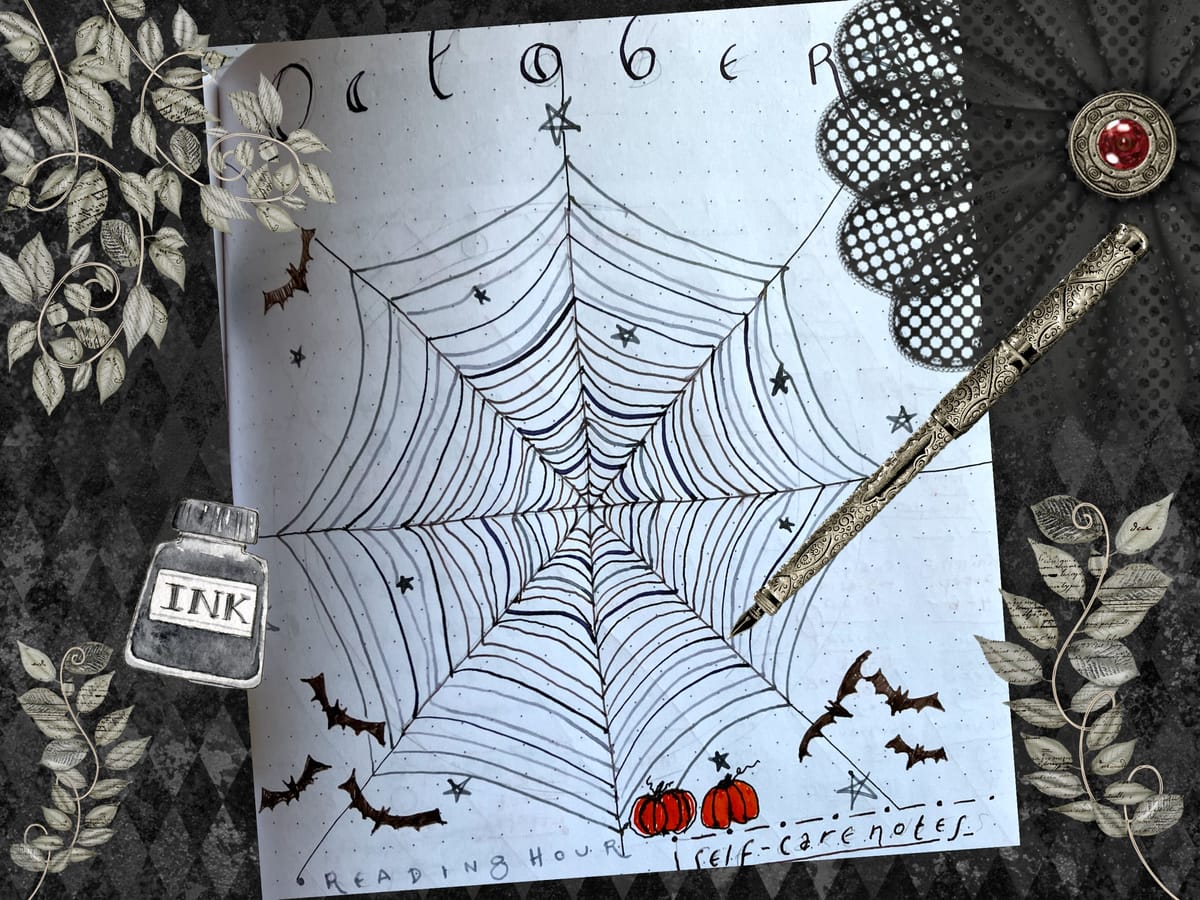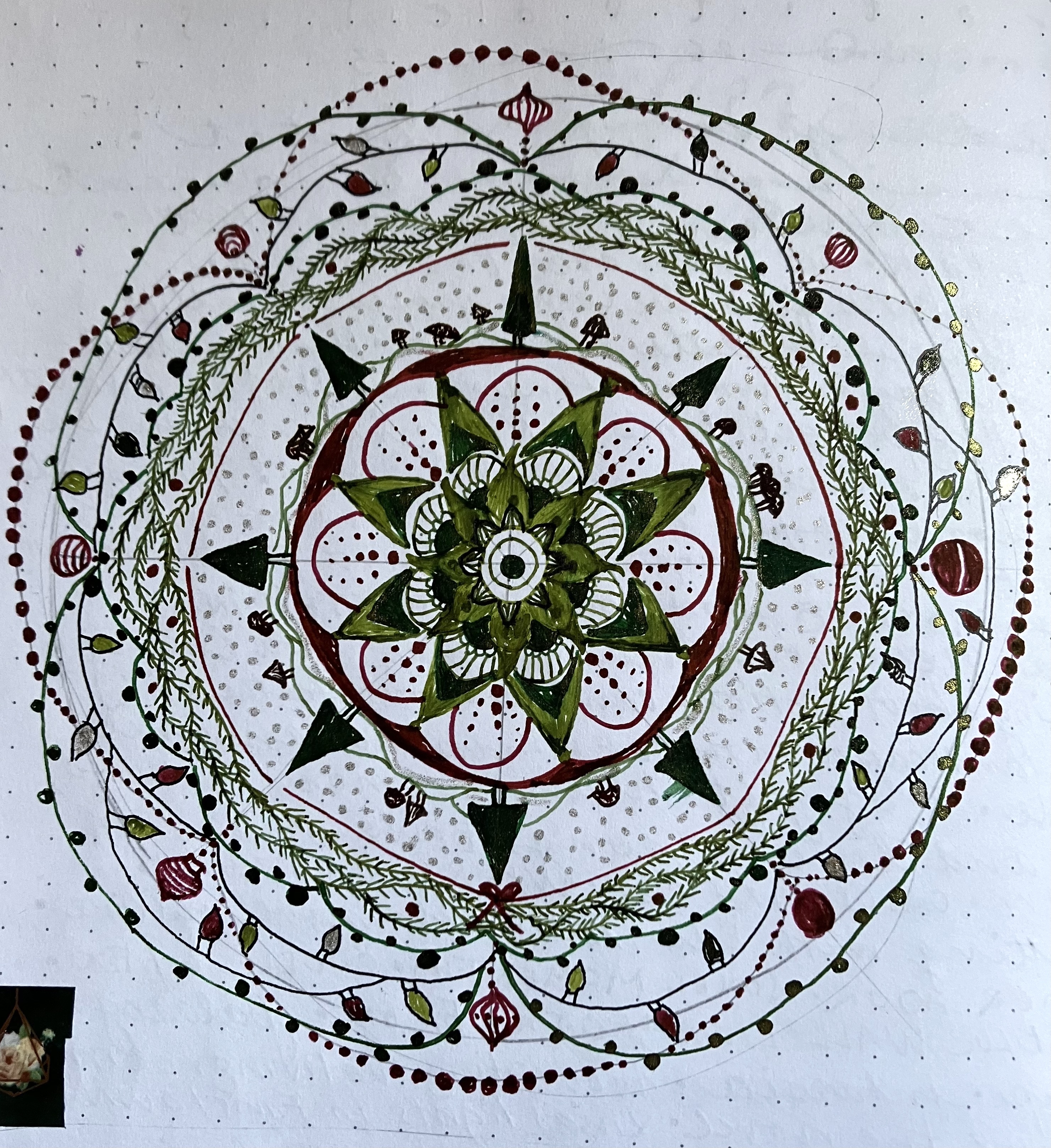9 Journalling Hacks That Perpetually Save My Life
temporal magic for the chronically awesome 🌝

When I say Bujo, do you picture an undead dog with a penchant for stationery supplies? Sometimes I do. But really, bullet Journalling, or Bujo for short is an infinitely customisable organisation system and it’s all on paper. It has revolutionised the way I deal with mulitple chronic illnesses and has freed me up from the urge I feel to be productive in order to justify my existence. Can you sing along with me on this one? Anyone?
I love organising time, and systems that do this for us. For the last forty years I have used a planner. In the 80s I had cheap Filofax style ones, and in the mid 90s when I was teaching at different institutions of higher learning, it was a Blackberry. At the turn of the millennium, I used online organising tools and stuck with them for twenty years.

One day I woke up and realised a machine could no longer keep track of time for me. My body was not living in the same temporal reality it once occupied. Time was eaten up by pain and exhaustion. A reoccurrence of CPTSD brought on a deep confusion around dates and years. I had always been a high functioning chronically ill person. I was teaching and running my own business, but several years ago my chronic pain became disabling after a return of post viral fatigue and trauma from an ongoing struggle to access healthcare.
I could no longer use ‘productivity’ methods to organise my life. Planners based on standardised units of time couldn’t help me because every day was different. Repeating to do lists and electronic reminders set me up for failure.
I had been told by medical professionals to use ‘pacing’—a prescriptive way of living where all tasks are broken up into units of time. While pacing, life is divided into 15 to 30 minute units with forced rest in between—another mechanised approach to time, albeit one that encourages periodic rest rather than a mindset of constant productivity. I’d lived my whole life in the rapture of creative flow, and this division of time was a form of torture for me. I knew there had to be another way, and I set out to find it.
After experimenting, I decided that not all tasks were equally draining. Some things like reading and writing actually helped me recharge and could take up hours of my life without a forced break, while other things like advocating for myself with medical professionals, dealing with the publishing industry, or using Instagram and Facebook were totally draining. I needed to measure life in energy units—spoons instead of units of time.
Do you know someone who would appreciate this post? Please spread the word!
It was around this time my friend Lori told me about Bullet Journaling. It’s an elegant, scaleable system for keeping track of time and staying organised. I’ve adapted it to track body/mind capacity as well as time, and I use it to create a bread crumb trail of hope for myself when pain and despair wear me down.
This method, which I have adapted for my own needs, has given me the tools to cope with the chaos of chronic illness while still living the life of a creative professional. Here are the 9 hacks I’ve found that work for me.
ONE use a dotted notebook to change things up as your life changes. (I like the Quo Vadis Life Journal or the Ottergami ones). I use couple of fountain pens filled with different colour inks that can be changed each month.
TWO Lay out the next 6 months in advance to keep track of upcoming commitments.
THREE keep track of time in alternate ways, beyond temporal commitments and standard dates. I enjoy using colours (see above) to remind me what day, week or month I’m in. I also I use these dividers:
- Annually—Each year I look over the past 12 months and also look forward to the coming year. I write goals (things I can personally control and work toward) and dreams (things I would love to happen but can’t control.) With a chronic illness sometimes all goals turn into dreams, and that’s ok.
- Quarterly—check in with hopes and dreams. I remind myself of victories and list things I have released in order to keep going.
- The Lunar Year—map out each moon phase of every lunar month & do some introspection at each phase. How is life corresponding to the waxing and waning of the moon? I enjoy this ‘shadow’ calendar as it has nothing to do with productivity, commitment or dates and is instead aligned with another way of being in the world.
- Wheel of the Year—on the sabbats and cross quarter days of the Neopagan calendar, I lay out a page with revelations and gifts that have come into my life. (Sometimes I don’t have enough energy to do this, and that’s ok. I can look at past celebrations and remember the struggles will pass.)
FOUR. Plan ahead. Before each month, week or day begins, draw them out. Space out activities not only based on how long they will take but how draining they are. Break up larger tasks into smaller parts and ask for help with draining tasks.
Here’s an example of what I mean by this. Some days there’s only one thing I have to do—like advocate for myself with medical professionals or publishing industry people. If I know it’s going to drain me, nothing else gets scheduled on those days. Other days, I can have a list of maybe three things I hope to achieve.
FIVE This is the most revolutionary of all these hacks, and I would never have known about it if I hadn’t worked out a system for dealing with capacity as well as time. If a task hasn’t been completed, and it keeps rolling over to the next day and the next, I just cross it out. YOU HEARD ME. I SAID IT, AND I GIVE YOU PERMISSION. Cross It Out. Maybe you will revisit it in the future or ask for help to complete it. Perhaps it doesn’t actually need to be done and can be released.
SIX Make self care FUN. Use stickers and washi tape if you like. Doodle & use your favourite colours. (Anytime I splotch my ink or make a mistake, I turn it into a dragon or other weird creature.) Create a cute tracker for good habits and self care. I create a monthly ‘tracker’ mandala which grows day by day. I add to it by doodling in the round when I remember good things I’ve done for myself. I do this as I drink coffee in the morning. It’s meditative. For every helpful ‘habit’ I did the day before, I add a row to the mandala, ever expanding outward as the month progresses. Visually, this is satisfying but also morale boosting. It reminds me that even when I feel like a wreck, there is beauty and better days will come. Here are some examples of mandalas from past months.


SEVEN Regularly record gratitude. In the morning I also write down three good things that happened the day before that I would have missed if I were not still alive. Sometimes awesome things happen, other times it’s just that I got to see the colour of my cat’s eyes, or my house plant has a new leaf. When I can’t think of anything good because I’m struggling that hard, I just look back over what I’ve written. I refer to this list when my depression is so bad I can’t see any connection to life. It always reminds me of how much love, beauty and deliciousness there is in the world.
EIGHT Keep track of time in still more ways. Log other things that shape your life. For me, this takes the form of a list books I’ve read—they shape time in interesting ways and are mnemonic devices for recalling the recent past. (Instead of recalling June I can remember the time I read The Confessions of Frannie Langton.) Maybe time for you will be meals you’ve eaten, conversations you’ve had or shows you are watching.
NINE Track good and bad days with a log of some kind. My symptoms vary in severity. I note these as well as any changes in my health or medication, etc. With this record, I can see ‘flares’ at a glance, but also good periods. It’s a reminder that flares pass, but also a way to track any patterns. What helped? What seemed to make it worse? How have I recovered before? Do I need to allow more spoons for things that I did that made my symptoms worse? (See Four above). This is also a handy record to refer to before medical appointments. Mine takes the form of a graph with notes.
Do you use a bullet journal? Are you a pacing pro or have any other hacks you would add to this list? Are there other organisational tools you have found useful?
I regularly write about living with chronic illnesses as well as folklore and travel around the Orkney Islands. Get these posts straight to your inbox by subscribing:




